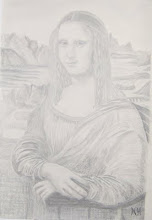Wednesday, 31 August 2022
Sir Isaac Newton Shell Theorem and the Topological Geometry of Theoretic...
Sir Isaac Newton proved the Shell Theorem, which states that: A spherically symmetric object affects other objects gravitationally as if it was a point mass concentrated at its centre.
Electric fields share the same geometry with charge forming spherical shells and we treat the entire charge as if it is a point charge placed at its geometric centre.
In this theory, only the interpretation changes the physics remains the same.
An interior of a spherical shell is naturally three-dimensional and the two dimensional surface can form a dynamic manifold for positive and negative charge.
The light photon of quantum mechanics forms the movement of charge forming the characteristics of three-dimensional space.
Each photon electron interaction only occurs once, but as a process of continuous energy exchange, it is continuously forming our ever-changing three-dimensional world.
Light photon ∆E=hf energy is continuously transforming potential energy into the kinetic Eₖ=½mv² energy of matter, in the form of electrons.
The spontaneous absorption and emission of photon energy is continuously cascading down from the Sun with spherical shells forming greater degrees of freedom for statistical entropy and the irreversible processes of classical physics.
Such as heat energy always flowing from hot to cold and friction always changing motion into heat.
As this dynamic spherical 4π geometry arises, it forms the inverse square law of electromagnetic and gravitational fields with gravity, inertia and mass being emergent properties.
Time is also emergent with the absorption of light always coming before the emission forming an ‘arrow of time’ within each reference frame with a probabilistic uncertain ∆×∆pᵪ≥h/4π future continuously unfolding, with potential energy transforming into the kinetic energy of what is actually happening.
The wave particle duality of light and matter in the form of electrons is forming a blank canvas that we can interact with forming the possible into the actual.
~
Subscribe to:
Post Comments (Atom)





No comments:
Post a Comment